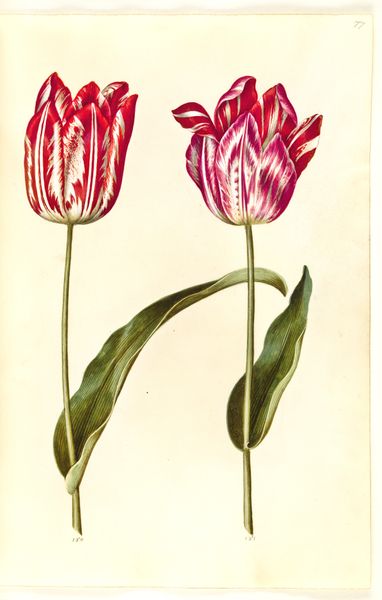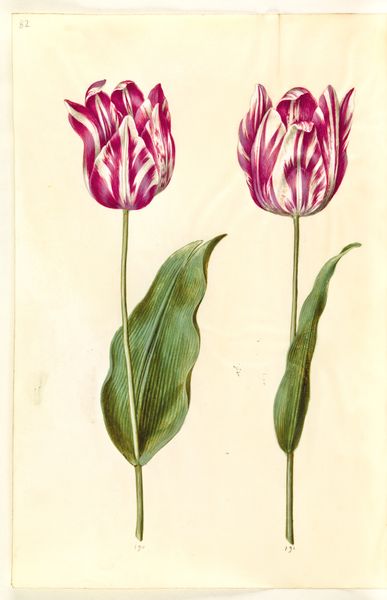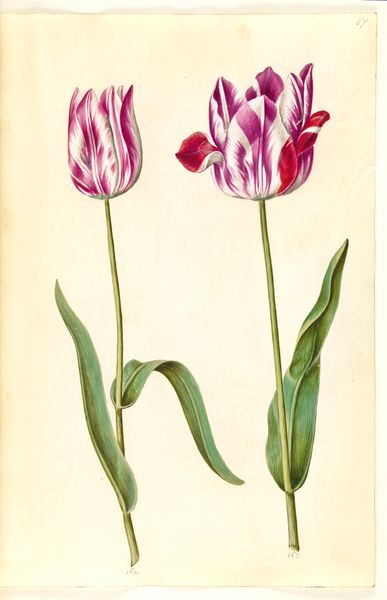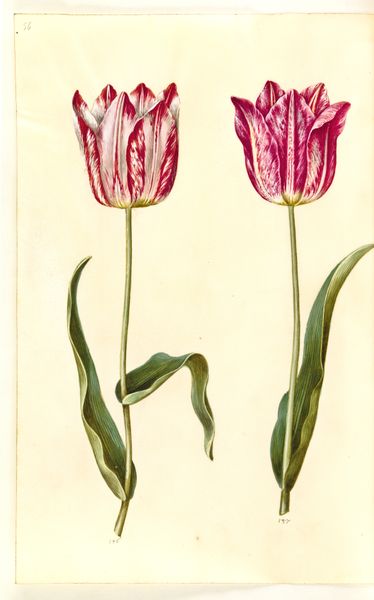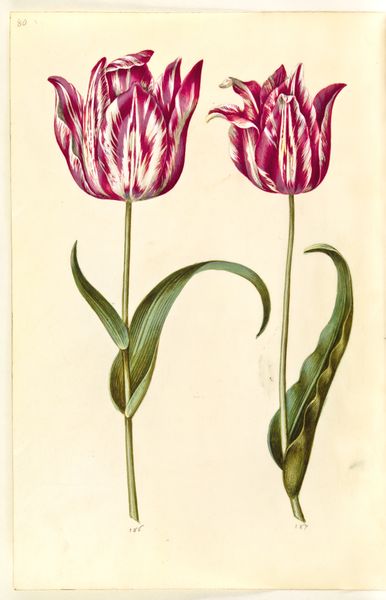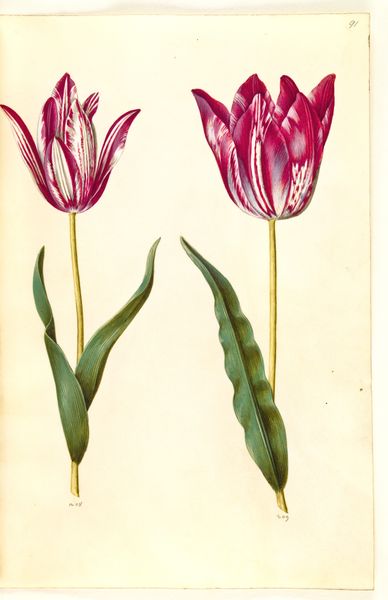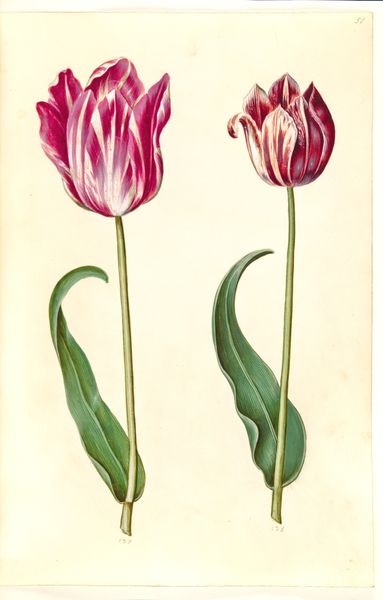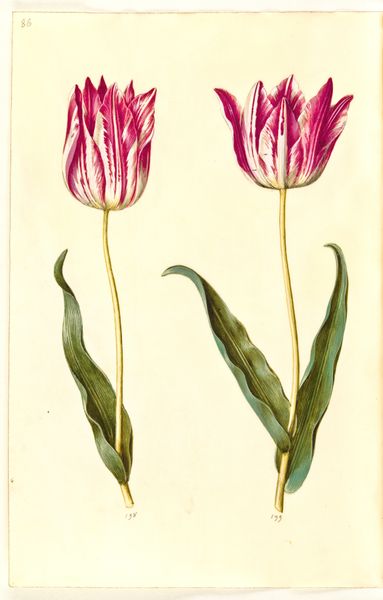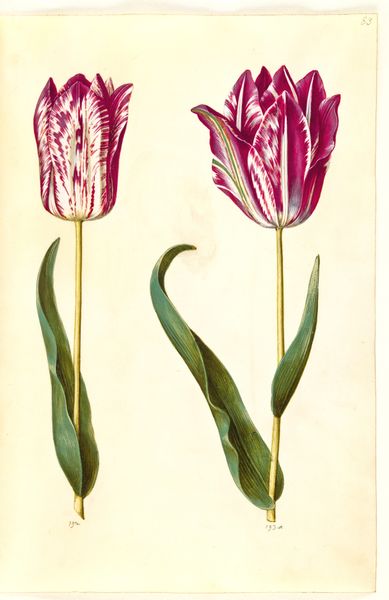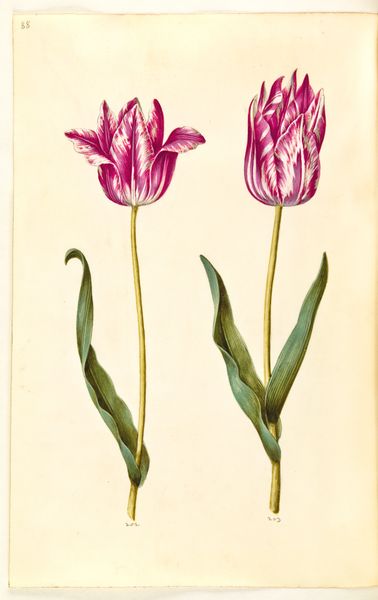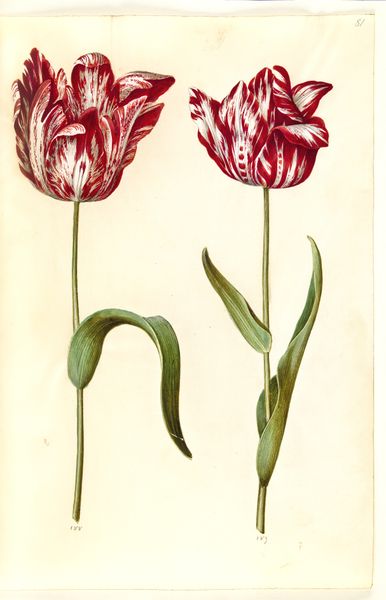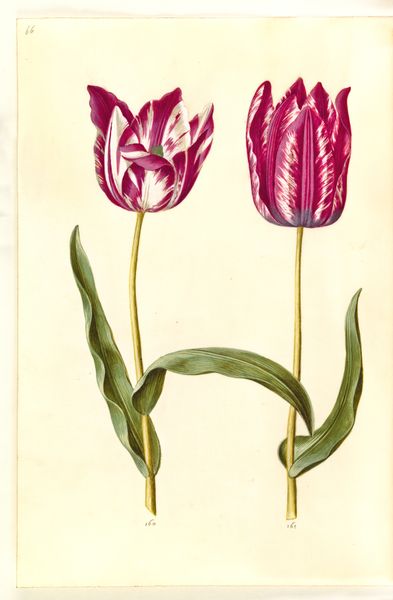
drawing, gouache
#
drawing
#
red and green
#
egg art
#
gouache
#
fluid art
#
food illustration
#
botanical photography
#
food art
#
watercolour illustration
#
munch-inspired
#
botanical art
#
warm toned green
Dimensions: 375 mm (height) x 265 mm (width) x 85 mm (depth) (monteringsmaal), 358 mm (height) x 250 mm (width) (bladmaal)
Editor: Here we have Hans Simon Holtzbecker’s “Tulipa gesneriana (have-tulipan)", created sometime between 1635 and 1664 using drawing and gouache. They are very pretty, but something about their rigid, almost clinical presentation feels quite detached. What do you make of these tulips? Curator: Detached, perhaps, but also deliberate. Think about the tulip in 17th-century Holland. This image is not just botanical illustration, but a potent symbol, capturing "Tulipmania" - an almost feverish speculation. Consider the specific patterns of variegation, the stripes on the petals. These weren’t merely aesthetic; they denoted rarity, and thus, value. Does knowing that change your initial sense of detachment? Editor: Absolutely! Suddenly these aren't just pretty flowers, but portraits of status and economic frenzy. The deliberate composition makes more sense; each detail is a data point. Were these images used for trade or identification? Curator: Precisely. Think of them as stock certificates rendered in pigment. Holtzbecker's skill lies in encoding this economic energy within seemingly objective forms. The flower becomes a vessel of cultural anxiety and aspiration. Notice how he painstakingly captures the unique marbling, each variation a signifier of its market worth. Editor: So, each tulip’s distinct pattern functioned like a brand? And preserving this image meant preserving its perceived value? It’s fascinating how intertwined art and economics could be! Curator: Indeed! The image freezes a fleeting moment of both natural beauty, but also a uniquely human obsession. By meticulously capturing the tulip’s fleeting beauty and commercially potent uniqueness, Holtzbecker gives us access into this moment. Editor: This has completely shifted my understanding of botanical illustration. Thanks to your insight, I now appreciate the rich cultural and economic weight within seemingly simple depictions.
Comments
No comments
Be the first to comment and join the conversation on the ultimate creative platform.
